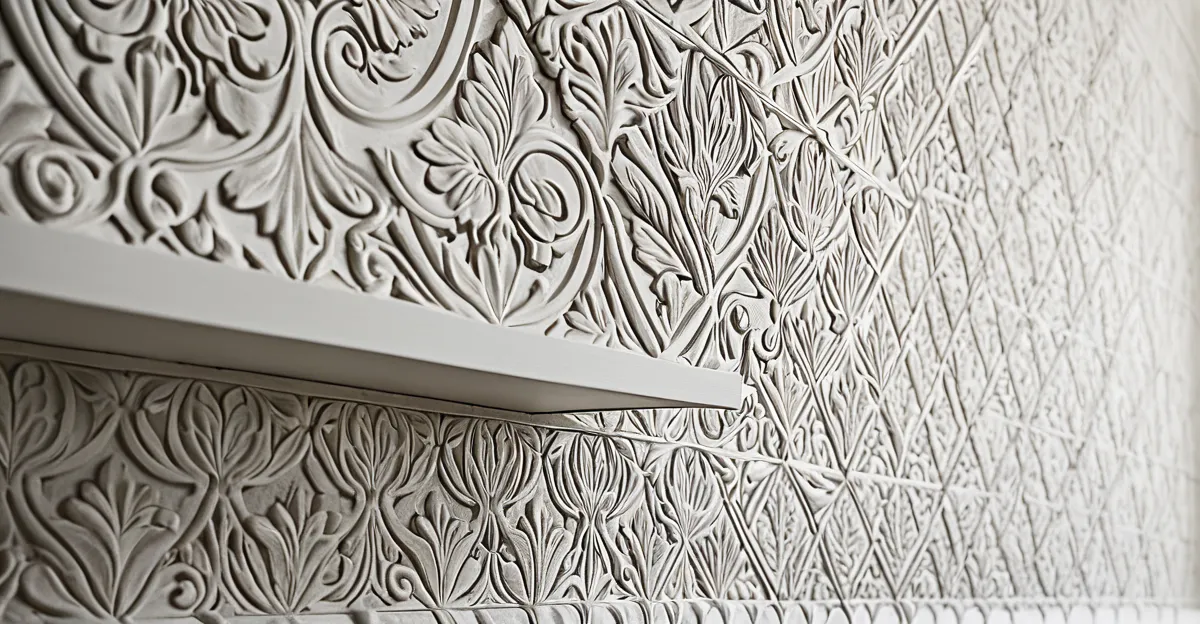Decorative plaster finishes transform interiors by adding depth, texture, and character, elevating ordinary walls into tactile works of art. From Venetian plaster’s luminous elegance to textured and metallic options, these finishes blend tradition with modern design, offering versatile solutions for every space. Mastering their application and choosing the right type can create lasting, stylish interiors that truly stand out.
Essential Guide to Decorative Plaster Finishes for Inspired Interior and Exterior Spaces
When exploring interior transformations, Decorative Plaster offers a nuanced spectrum of finishes, from ancient Venetian plaster and polished lime to modern concrete-look textures and intricate metallic effects. Choices span tactile stucco, marble-effect walls, and subtle gesso on ceilings—each technique tailored for its unique texture and visual impact. The versatility is clear: you can achieve smooth opalescent lustre, reflective metallic shimmer, or rugged tactile surfaces, depending on the atmosphere you want indoors or out.
Have you seen this : Essential guide to air source heat pump setups in Croydon
Selecting the right decorative plaster revolves around several vital considerations. Factor in the room’s natural light, moisture exposure, traffic levels, and required maintenance. For example, tadelakt—a Moroccan lime plaster—is preferred for bathrooms due to its water resistance, whereas polished lime plasters suit dry areas aspiring to a luxurious marble-like finish.
Cost, durability, and upkeep also influence the decision. Finishes from classic marmorino to bespoke metallics can be only millimeters thick yet endure for decades with proper care. Recent advances make patching and cleaning easier, extending the life of these so-called “lifetime finishes.” Modern design trends now embrace both heritage-inspired surfaces and bold, contemporary wall artistry.
Also read : Ultimate guide to boosting joint health in senior dogs: proven strategies for happy, active pups
Diverse Decorative Plaster Finish Styles and Design Inspirations
Venetian and Marmorino Plaster: Opalescent and Marble-Effect Luxury
Venetian plaster, or Stucco Veneziano, blends lime putty with marble dust to create a signature marble-effect wall treatment. Precision scoring: It delivers opalescent, multi-tonal depth—achieved by applying thin, polished layers. Marmorino classic lime plaster, originating from the same Italian region, pushes this effect further with a silkier and more distinct stone resemblance. These surfaces are valued for durability, breathability, and the ability to be custom-dyed—there are now well over 150 colour variations available, spanning subtle earth tones to dramatic hues.
Textured, Gesso, and Tadelakt Finishes: Tactile Surfaces and Traditional Craftsmanship
For those prioritising dimension, textured wall plaster ideas such as gesso and tadelakt offer historical and artisanal charm. Gesso is noted for its crackled texture, while tadelakt’s lime-based recipe, polished with olive oil soap, is entirely water-resistant—making it a trusted plaster finish for bathrooms or wet spaces. Both finishes provide a welcoming tactile quality and are often revived in heritage homes.
Contemporary Innovations: Metallics, Concrete Effects, Colour Variations and Custom Surface Designs
Modern decorative wall surfaces now incorporate metallic plaster coatings—adding reflective mica or aluminium powder for a shimmery change as the light shifts. Concrete-look plaster introduces a cool urban edge, while colour variations and layered techniques enable bespoke patterns. These options extend to unique artisan wall finishes, supporting creative expression and tailored designs for both modern and traditional interiors.
Expert Advice for Application, Preparation, and Customization
Substrate Assessment and Surface Preparation for Lasting Results
Precision in decorative plaster finishes starts with thorough substrate assessment and meticulous surface preparation. Remove dust, grease, and brittle materials to ensure strong adhesion. Fill cracks with compatible fillers and confirm the wall is dry and even. If moisture resistance is required, select a moisture-tolerant substrate and use the correct primer—this is vital for kitchens and bathrooms. Multiple thin coats are preferable to one thick layer for longevity and structural integrity.
Understanding Application Techniques and the Importance of Skilled Craftsmanship
Successful results depend on choosing the right plaster layering method and mastering the suitable trowel type—Japanese trowels, steel Venetian trowels, or plastic blades, each offering unique finishes. Skilled craftspeople develop a seamless, refined look by applying upward and sweeping strokes. Respected finishes like Venetian plaster and tadelakt require precise timing between layers and controlled drying conditions. For complex metal, marble, or bas-relief effects, professionals apply colored glazes, micas, or embedded design stencils.
Customizing Plaster Finishes: Colour Mixing, Layering, and Effect Enhancements
Colour can be introduced into natural plasters through mineral or oxide pigments, enabling custom wall texture options. Layering translucent coats produces opalescent or marble-like depth. Waxing or sealing protects surfaces and intensifies sheen; metallic plasters may incorporate aluminum, bronze, or mica powders for light-responsive effects. Advanced finishes combine stenciling, banding, or tailored hues, with artisans often experimenting to deliver unique, expressive results that enhance both residential and commercial interiors.
Caring for, Maintaining, and Maximizing the Value of Decorative Plaster
Maintenance Routines and Longevity of Modern Plaster Finishes
Precision: Modern decorative plaster finishes are remarkably durable—lasting for decades when properly maintained. Routine dusting with a soft cloth, and gentle cleaning with pH-neutral soap and water, preserves their original sheen and texture. Waxing or sealing some plaster finishes periodically enhances moisture resistance and protects the surface from staining and abrasion. Avoiding harsh chemicals is essential, as these can damage lime-based or Venetian plaster. Attention to environmental conditions—controlling humidity and protecting from direct water exposure—significantly extends finish longevity.
Professional and DIY Repair Solutions
Small blemishes, cracks, or chips in decorative plaster can be repaired with specialist fillers or touch-up compounds matched to the original texture and colour. Many scratches in Venetian or polished lime plaster may be addressed by gentle buffing or re-waxing. For more complex issues—such as substantial cracking or delamination—professional artisans skilled in plaster repair techniques ensure seamless restoration. Advances in repair products mean full wall resurfacing is rarely needed; targeted repairs often suffice, saving time and maintaining design integrity.
Value Considerations: Cost, Eco-Friendliness, and Heritage Preservation
Decorative plaster’s pricing reflects the complexity of application, material quality, and bespoke finish options. Eco-friendly choices—such as lime-based plasters—promote healthy air quality and sustainability. Heritage preservation is also possible; authentic plaster craftsmanship and tailored repair approaches support the conservation of historic or architecturally valuable interiors.











